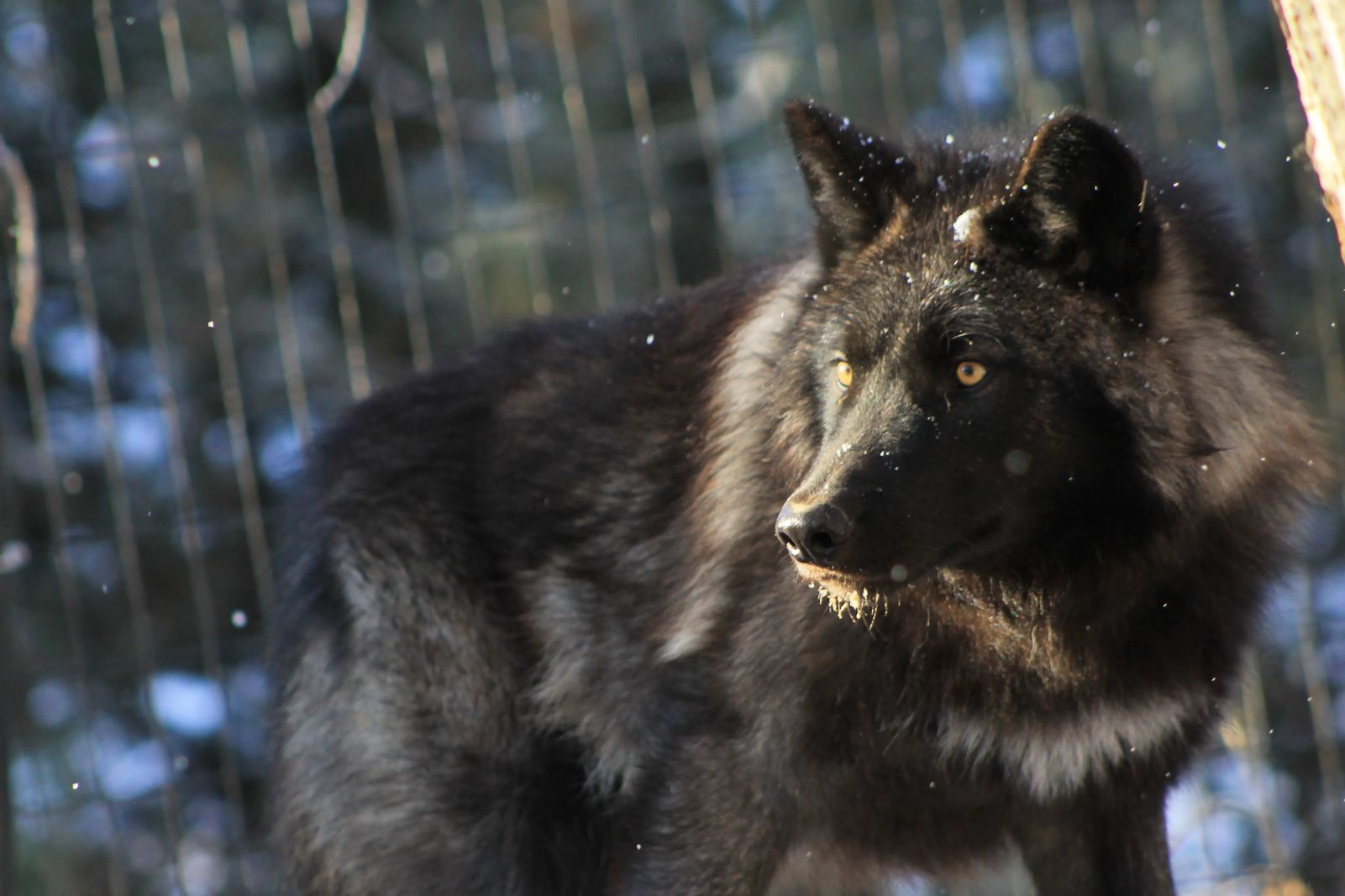
Grey Wolf
CANIS LUPUS
Fur color of grey wolves varies geographically, ranging from pure white in Arctic populations, to mixtures of white with gray, brown, cinnamon, and black to nearly uniform black in some color phases.
Wolves live, travel, and hunt in packs of 7 to 8 animals on average. Packs include the mother and father wolves (called the alphas), their pups and older offspring. The alpha female and male are typically the pack leaders that track and hunt prey such as elk, deer, moose and caribou, as well as beaver, rabbits and other small prey.
Wolves develop strong social bonds within their packs. The social hierarchy is established and maintained through aggressiveness, elaborate greetings, and submission.
Grey wolves communicate using vocalizations, scent marking, and body language. Howling is used to communicate territorial cues over long distances and helps to bring the pack back together when they are dispersed. Each wolf has a distinct howl.
Wolves play a key role in keeping ecosystems healthy. They help keep deer and elk populations in check, which can benefit many other plant and animal species. The carcasses of their prey also help to redistribute nutrients and provide food for other wildlife species, like grizzly bears and scavengers. Scientists are just beginning to fully understand the positive ripple effects that wolves have on ecosystems.
Click HERE for a Grey Wolf Activity Sheet!
Our Current Residents
Simpson: Male, Born April/May 2020
Simpson was found abandoned by his pack when he was around five weeks old and brought to ZooMontana in June 2020. After observing Simpson's behavior, he seemed somewhat off. We learned he was suffering from a condition known as congenital hydrocephalus - or water on the brain. In March 2021 Simpson was taken to Washington State University's College of Veterinary Medicine to have a shunt placed in his brain to drain the fluid. He is now doing much better. Simpson has a grey colored coat and is missing part of his left ear.
Onyx: Male, Born April 8, 2020
Onyx was born at Bear Country USA in South Dakota and came to ZooMontana in October 2020. Onyx has a black colored coat.
Taxonomy
- Kingdom: Animalia
- Phylum: Chordata
- Class: Mammalia
- Order: Carnivora
- Family: Canidae
- Genus: Canis
- Species: Canis lupus
Animal Facts
- Carnivore: eats deer, elk, bison, and moose as well as smaller mammals
- Population: sensitive
- Habitat: Forest, Tundra, and Grasslands
- Diurnal: active during the day














































